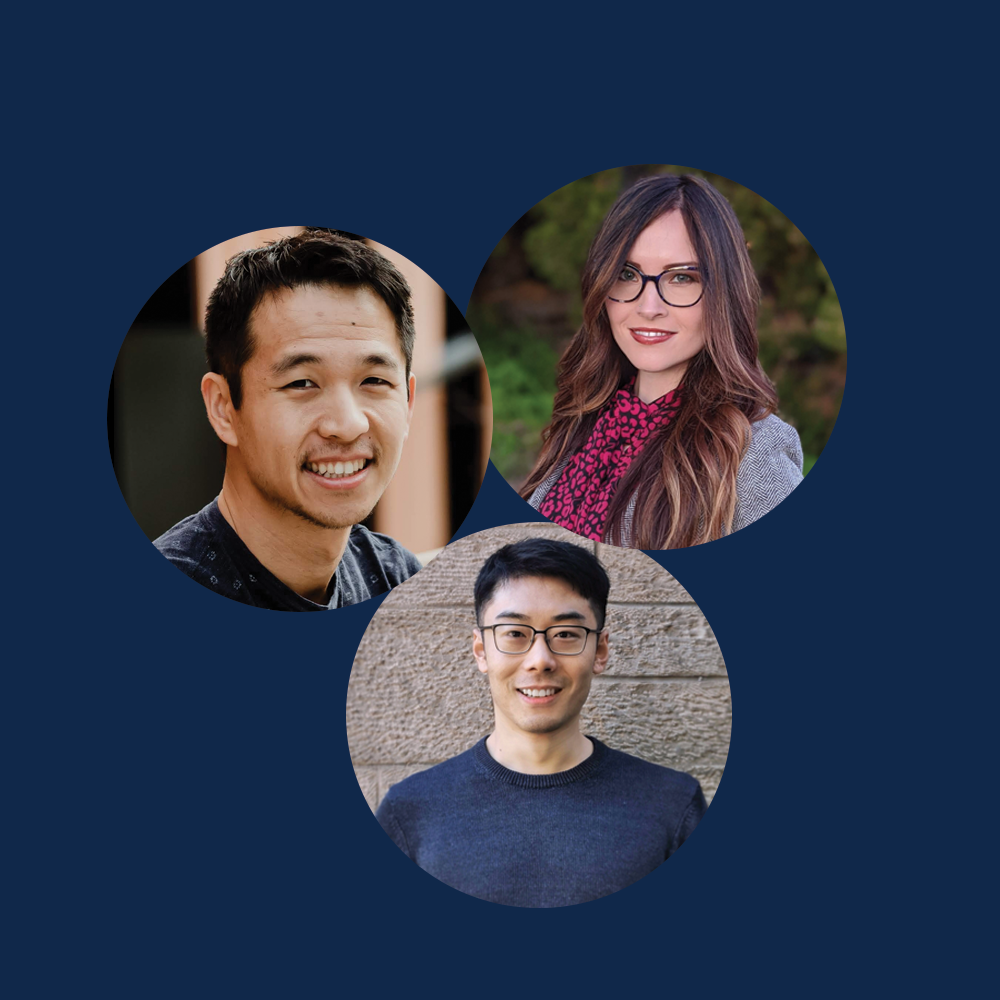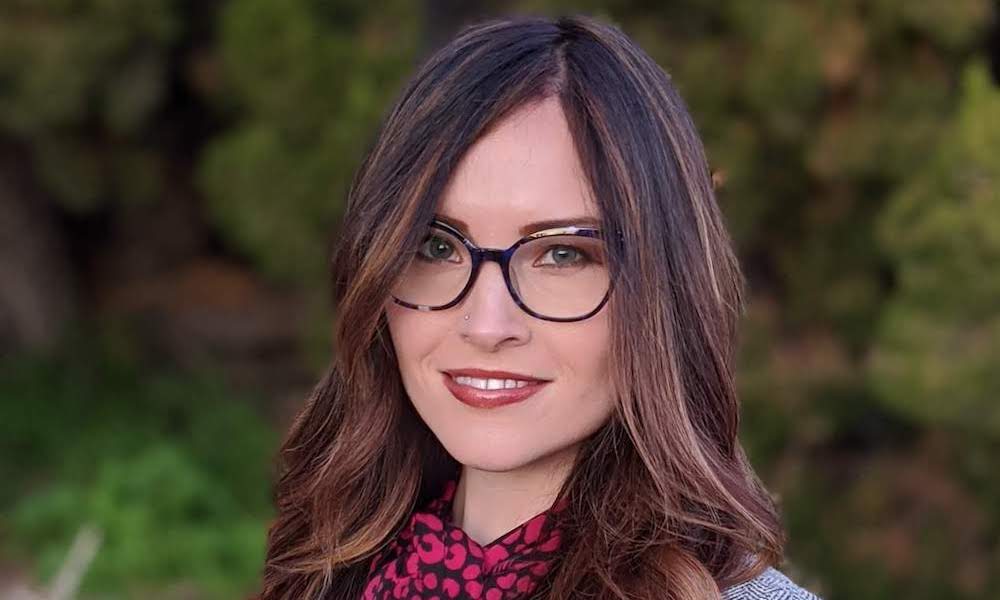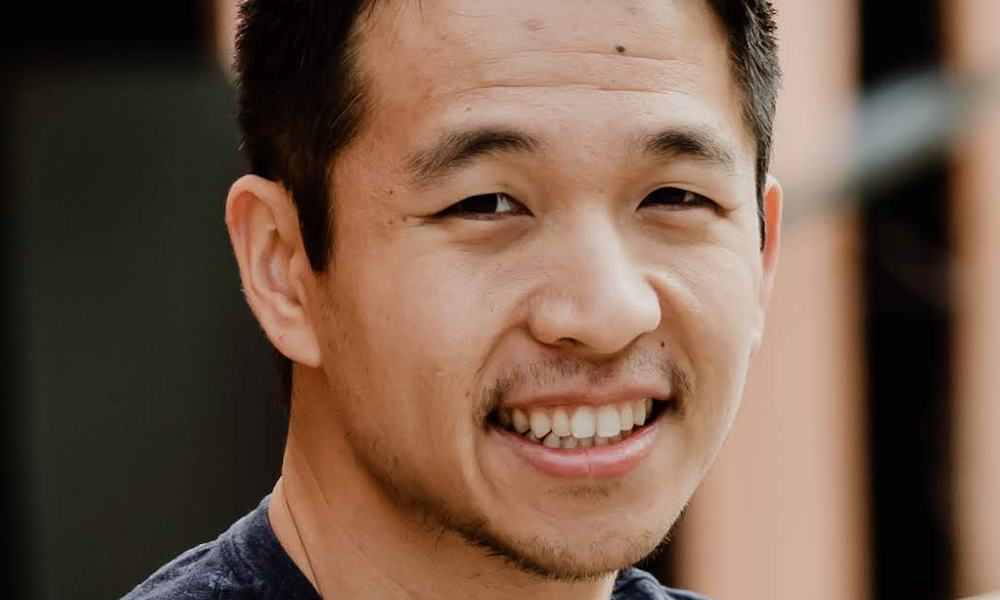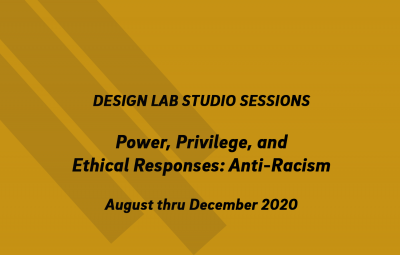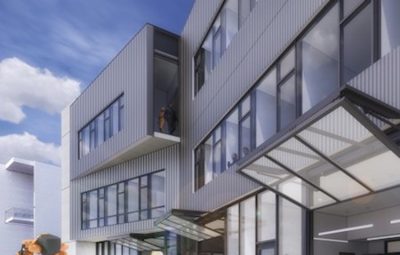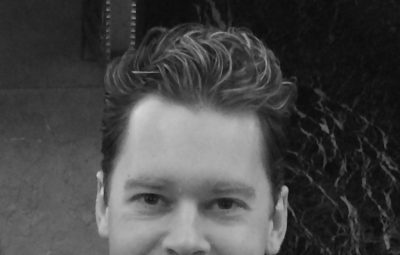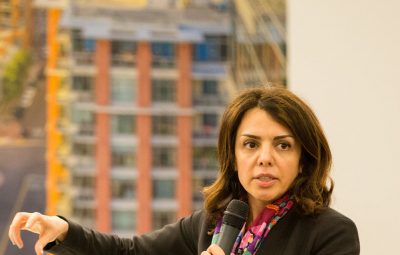As a global pioneer in design thinking, research, and invention, The Design Lab prides itself on recruiting the brightest and most innovative minds in the design field. Today, we would like to extend a warm welcome to brand new faculty members Elizabeth Eikey, Haijun Xia, and Edward Wang!
Elizabeth Eikey
From a first-generation undergraduate student at Penn State, then an inquisitive Best Buy employee and finally, to the Assistant Professor in the Department of Family Medicine and Public Health & The Design Lab at UCSD, Dr. Elizabeth Eikey has an illustrious career. Her research work at The Design Lab focuses on the intersection between technology, mental health, and equity, primarily studying the possible applications for technology in supporting mental health and well-being.
It was UC San Diego’s commitment and passion to interdisciplinary work that drew Elizabeth Eikey to the university in the first place. ‘UC San Diego makes an overt effort to support interdisciplinary work, which is exactly how I think we can solve deeply layered problems that we face today,’ the scientist says. It is also this quality that interested Eikey to The Design Lab. ‘Health and design are a natural fit,’ she says, ‘One of my goals is to ensure that all voices are heard, and that’s exactly what The Design Lab helps with by putting people at the forefront and offering an extensive network of connections with community and potential stakeholders.’
Eikey always knew she was interested in design and technology but wasn’t sure how exactly she could contribute. ‘After obtaining a bachelor’s degree in Psychology, I wasn’t sure what I wanted to do, and so I started working at Best Buy,’ Eikey stated, attributing her time there as a pivotal point in her discovery to pursue graduate school and conduct research, ‘I was planning to apply for a second bachelor’s degree in Information Science when I asked a customer why she was buying an iPad and discovered that she was a graduate student at Penn State, specializing in they very domain I was interested in. We spoke for a bit, and I discovered that I didn’t need to pursue a second bachelor’s and could just go straight for a PhD. Without asking those ‘why’ and ‘how’ questions that day, my trajectory would have been completely different. I take that same approach in my research today, asking ‘how’ and ‘why’ to understand people’s lived experiences and context.’
Today, Elizabeth Eikey is an Assistant Professor in the Department of Family Medicine and Public Health & The Design Lab at UCSD, Director of the MiD Lab (Mental Health in Design Lab), and the Assistant Director for the iSchool Inclusion Institute (i3).
Haijun Xia
Imagine immersed in a virtual environment with all kinds of architectures, which are constructed by someone else to represent the data of the presidential election or COVID-19. You can walk around in this virtual space, much like walking in a museum, to learn the different aspects of the data. These are just a few of ideas that Haijun Xia has for the future of data visualization using Virtual Reality. Through the innovation of the fundamental representations and interactions of graphical user interfaces, his research aims to design interfaces that make everyone more creative and productive. ‘My research is the direct result of my frustration with current graphical user interface systems that are fundamentally the same as what they used to be about 50 years ago!’ Xia states, ‘This is unacceptable. We’re not doing the same work or using the same devices anymore.’
How can we enable users to directly articulate their intentions to the computers? How can we reduce the gap between human cognition and digital computation? How can new graphic interfaces be developed to support but not to hinder creativity and productivity? These are the questions that Haijun Xia wants to eventually answer. But it wasn’t always this way. As a sophomore in college pursuing computer science, he found working on relaying information, data protocols and network structures weren’t of interest to him. ‘During my third year, I joined a human-computer research lab and learned about this device called Leap Motion, which is a gesture sensing device that can track your fingers in the air,’ Xia recounts. The experience developed in him an interest to invent new ways of interacting with digital devices.
After receiving his PhD in Computer Science from University of Toronto, Xia made the move across countries to begin his time as a researcher at UC San Diego. ‘I wanted to work at The Design Lab and UC San Diego, because of the diversity of skill here,’ says the Professor, ‘We are all approaching the many challenging research questions from different angles, which is really important to develop comprehensive solutions. The Design Lab also promotes communication between its faculty members which helps widen your perspective on your own research, since you learn to look at it through the angle of someone from a completely different field. It helps prevent the bias you develop when you’re stuck in your own field.’
Haijun Xia is now an Assistant Professor in the Cognitive Science Department and the Design Lab at UCSD.
Edward Wang
When Edward Wang was an undergraduate student at Harvey Mudd, he never expected himself to become a researcher, let alone becoming a professor. It was only after a Professor offered him the chance to help design a course she was planning about biosignal processing, that he began on this path. ‘As I was designing the class over summer, I had to read a bunch of papers,’ he says, ‘I couldn’t stop thinking about how cool all of it was. Especially when it branched out into computer science and how it could be involved in biosignal processes.’ From there, it was clear to him that this was the field he wanted to go into. He discovered he specifically wanted to go into mobile health, after taking part in a clinical health program where he had to design a product to help elderly Japanese citizens age in-place. During the design process, Wang became interested in utilizing technology in health and wellness. ‘It was my advisor, during my PhD who really inspired me to go into the avenue of mobile health,’ Wang states, ‘He was a pioneer in the sensor side of global health. While I worked with him, I noticed how mobile health was a growing field but had an interface problem. And that’s when I became interested.’
Edward Wang’s research focuses on developing new sensing techniques for monitoring a person’s health more continuously, conveniently, and cheaply. He repurposes sensors on mobile phones so that healthcare can go beyond the walls of the clinic. “We don’t have a really good way of understanding human health beyond what’s measured in hospitals and clinics.’ he says, ‘We need a better way to capture that kind of information. Our current abilities in measuring things is fairly data-poor. Ultimately my research all comes down to redesigning our data landscape and how we make sense of it. Mobile health can definitely help answer that.’
After completing his PhD at University of Washington in Electrical & Computer Engineering, Wang decided to pursue his research at UCSD. He attributes this decision to the growth of information technology on campus, combined with the presence of the UCSD Medical school. In particular, he aimed to join The Design Lab due to its collaborative spirit. ‘There are no walls between faculty members,’ states the researcher, ‘Because of this I get to bounce ideas off different people about their expertise and collaborate beyond my own skillset. I’m able to get a taste of so many avenues I’d like to explore, but cannot do all by myself. This kind of synergy leads me to places I can’t go to myself. The Design Lab is very good at creating a collection of like-minded, but technically very different people to promote creativity.’
Edward Wang is an Assistant Professor at UCSD’s Electrical and Computer Engineering department and the Design Lab. He is also affiliated with its CSE department, Center for Wireless and Population Health Systems (CWPHS), and Center for Mental Health Technology (MHTech).
Through each of their unique contributions to the design, it’s exciting to imagine how this field will grow, evolve and improve the human experience. The Design Lab is committed to creating such a change and continues to foster innovation.
